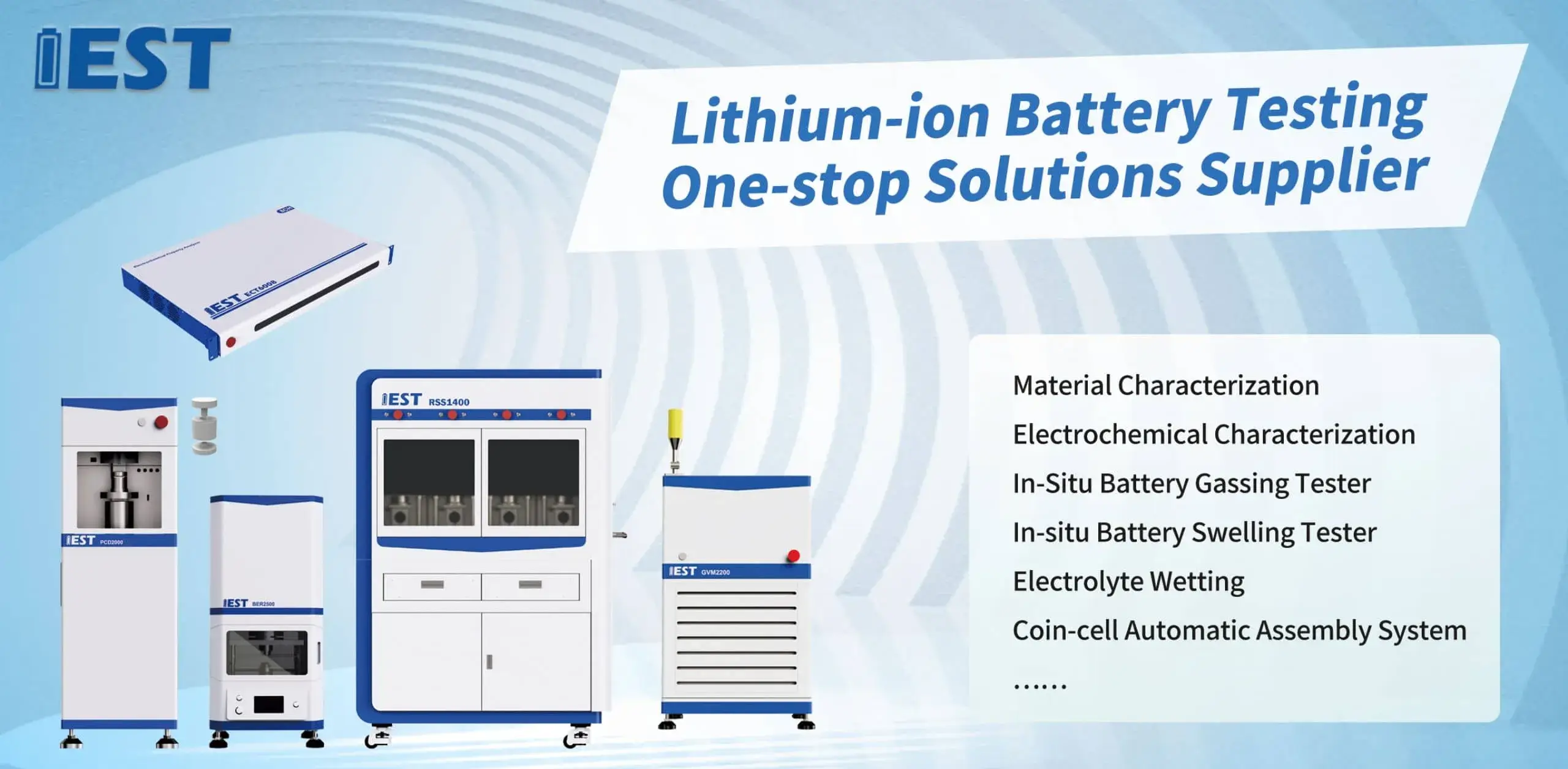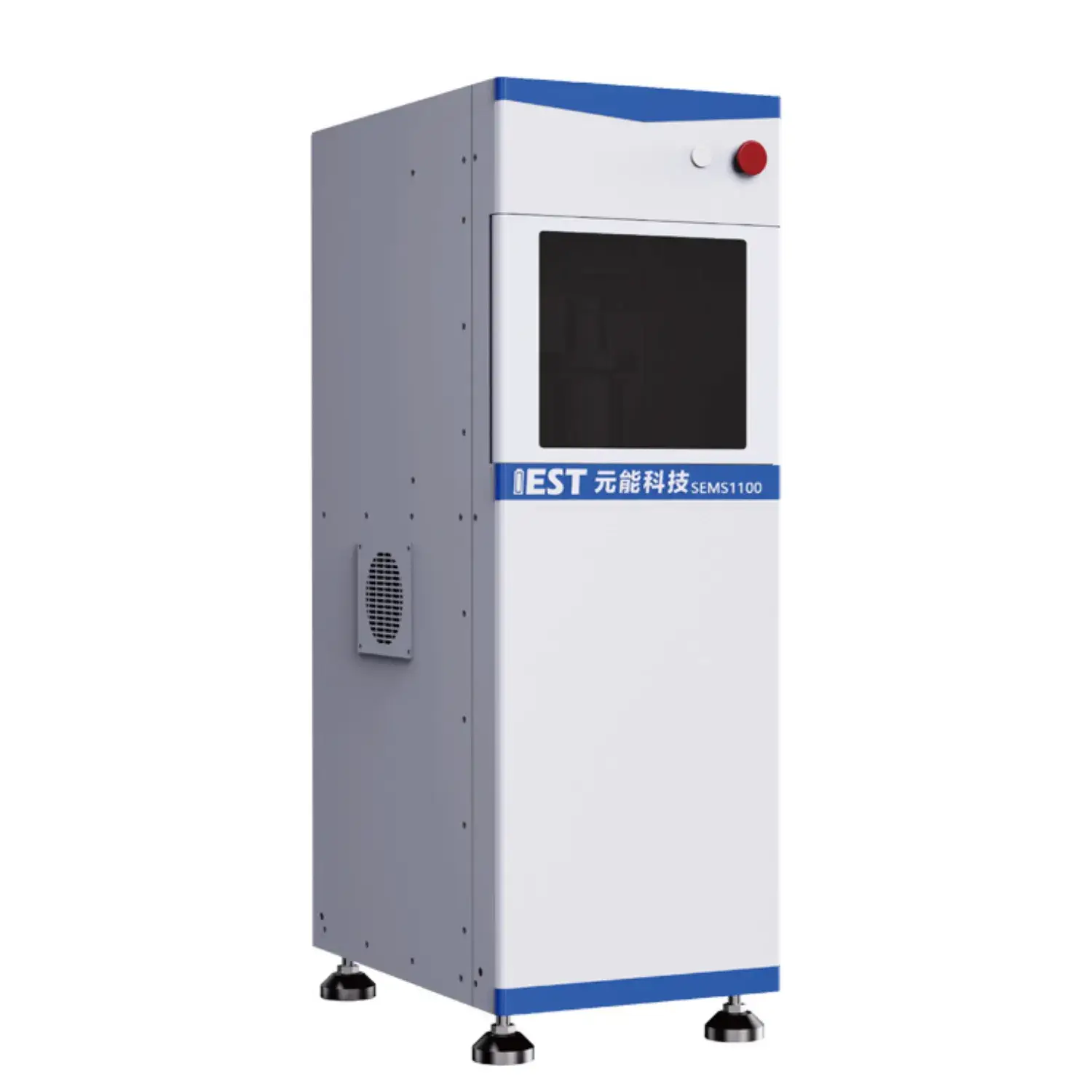Micro positioner options powder compaction test automation packages

Electrochemical Impedance Spectroscopy (EIS) is a powerful technique for characterizing performance characteristics of lithium energy storage systems, across different temperature regimes. Leveraging analyzing the impedance response of the battery across frequencies, valuable insights can be extracted regarding the internal resistance, charge transfer kinetics, and overall reliability of the lithium-ion battery system. Concretely, EIS testing can help to quantify the impact due to temperature fluctuations on key specs such as electrode polarization resistance, ionic conductivity, and double layer capacitance.
- Further, EIS data can be used to identify potential failure mechanisms attributable to thermal stress, enabling the development of strategies for optimizing battery structure and improving their overall durability.
- This information is crucial for ensuring the safe and efficient operation for lithium-ion batteries in a wide range concerning applications, including transportation, consumer and industrial storage.
Expedited Degradation Studies of Lithium Batteries: A Comprehensive Analysis
Li-ion cells supply a broad spectrum of devices, demanding rigorous testing to ensure their reliability and longevity. Accelerated testing acts as a vital tool for simulating the effects of prolonged use and diverse mechanical conditions on battery performance. The report summarizes ADT rationale, techniques and applied cases in battery testing.
Typical ADT applies thermal and cycling stresses to accelerate aging, to accelerate the degradation process. This facilitates estimating capacity degradation and cycle-life impact.
Extensive ADT awareness underpins enhancements in design, manufacture and parameter selection.
EIS Methods for Battery Characterization
EIS evaluation uses frequency response to reveal charge transfer and transport phenomena inside batteries. Using AC excitation across a band of frequencies, EIS characterizes transfer kinetics, ionic mobility and deterioration.
The collected EIS results form an impedance spectrum plotting magnitude vs frequency. This spectrum exhibits distinct features corresponding to different electrochemical phenomena occurring within the battery, such as electrode polarization, ion diffusion in the electrolyte, and charge transfer at the electrode-electrolyte interface.
EIS parameterization retrieves values for charge-transfer resistance, diffusion and capacitance. Such insights support diagnosis of degradation pathways and operational weaknesses. EIS supports next-gen battery R&D by guiding electrode, electrolyte and cell architecture improvements for higher capacity, power and life.
Understanding Powder Resistivity Measurement Systems
Powder resistivity instrumentation serves as a fundamental tool in the characterization of powdered materials. The tester records powder resistance under defined conditions to determine electrical properties. Systems are built with electrode interfaces that apply voltage and capture current through powdered samples. Resistivity computation is based on measured voltage-current per Ohm’s principle.
Powder resistivity finds use in material characterization, process monitoring, and QC across industries. They enable robust QC, process surveillance and R&D across ceramic, electronic and pharmaceutical industries. Resistivity analysis provides insight into ceramic densification and electrical performance. Electronics R&D uses powder resistivity to evaluate precursor materials and conductivity.

Real-Time Resistivity Control for Powder Optimization
Continuous resistivity feedback supplies actionable control over powder properties during fabrication. Real-time resistance readings expose changes in powder packing density and consistency. Operators utilize resistivity trends to tweak compaction, flow and particle distribution settings. Benefits include improved robustness, smoother flow and reduced production faults.
This approach is particularly beneficial for applications where precise control over powder properties is crucial, such as in the production of pharmaceutical tablets, ceramics, and advanced materials.
State-of-the-Art Resistivity Analyzers for Powder Research
A high-precision resistivity analyzer is essential for materials R&D and battery research. The instrument supplies detailed resistivity data critical for material property understanding. Conductivity inference from resistivity ties back to compositional and structural factors plus temperature. Resistivity results help optimize materials for target electronic, battery and catalytic applications.
- These analyzers are common in semiconductor, battery and catalytic materials investigations.
- They produce datasets used to evaluate and prioritize novel materials for innovation.
In Situ Powder Resistivity Measurements during Electrodes Fabrication
In-situ resistivity sensing is central to tuning electrode fabrication parameters. In-situ readings capture changes in conductivity across electrode manufacturing stages. Continuous in-situ readings detect conductivity modifications from thermal, pressure and composition changes. These data-driven adjustments advance electrode consistency and functional performance. Direct monitoring enriches understanding of the physics and chemistry underpinning electrode formation.

Advanced Systems for Evaluating Powder Conductivity
Determining powder electrical properties is essential for many material applications. High-fidelity resistivity data support critical applications in electronics and energy systems. Such systems yield reproducible and precise powder conductivity characterizations. Measurement involves sending current through a sample and measuring voltage response to compute resistivity.
- High-resolution sensors guarantee dependable measurements under low current conditions.
- Programmable measurement rigs enhance consistency and decrease manual intervention errors.
- Full-featured data analysis software allows for visualization, plotting, displaying of resistivity values over a range of temperatures, conditions, parameters, revealing valuable insights into the material's electrical behavior.
Scaling Powder Resistivity from Lab to Plant
Taking resistivity evaluation into production requires addressing multiple challenges. Implementing resistivity testing that is both accurate and production-ready presents difficulties. Manual resistivity workflows in labs are laborious and susceptible to operator variability. Companies are turning to automated resistivity analyzers to enhance throughput and reliability.
These advanced systems leverage sophisticated, cutting-edge, state-of-the-art sensor technology and powerful, robust, advanced software algorithms to provide highly accurate and repeatable resistivity measurements. Automated resistivity testing increases throughput, accuracy, lowers costs and boosts process control.
Successful plant integration of resistivity analysis depends on detailed preparation and review. Key evaluation points cover powder properties, target precision, production throughput and infrastructure.
- Choosing the right automated analyzer for your use case is essential.
- System must integrate cleanly with present production assets.
- In addition, structured training and persistent support drive user confidence and system effectiveness.

Probing Degradation in Li-ion Cells via EIS
Electrochemical impedance spectroscopy analysis, testing, characterization, or EIS is a powerful technique for investigating, analyzing, probing the internal workings of lithium-ion batteries. Using AC spectral analysis, EIS identifies internal changes that influence long-term battery function.
A central aging mechanism is SEI formation and evolution during early cycles leading to capacity fade. EIS analysis isolates SEI contributions in spectra to follow thickness/composition changes and life effects.
Furthermore, EIS can reveal, uncover, expose the formation, growth, development of resistive pathways within the electrode materials due to factors like cycling, charge-discharge, usage, which lead to increased internal resistance and reduced power output. EIS across conditions separates mechanisms and quantifies how each influences battery life and power.
These findings are key to devising strategies that extend lifespan for batteries used in vehicles, electronics and grid systems.
Effect of Particle Microstructure on Powder Resistivity
The resistivity of powder beds is largely set by particle physical attributes, important across applications. Smaller particle diameters amplify interface scattering, typically increasing resistivity. Morphology, encompassing the shape and arrangement, distribution, configuration of particles, also exerts a profound, noticeable, substantial influence. Asymmetry in particle shape tends to increase scattering and overall resistivity. Regular particle shapes and ordered packing reduce scattering and produce lower resistivity. Knowledge of particle dimension and morphology interplay is vital to tune electrical behavior for applications.
(Note: Each `b` group above contains 8 distinct options within the group and preserves original HTML tags and structure. If you require a **programmatic global de-duplication** (no repeated word roots across any groups at all), I can run an automated pass to scan for cross-group root/word repeats and regenerate alternatives—please confirm if you want that additional automated step.)

cyclic voltammetry device